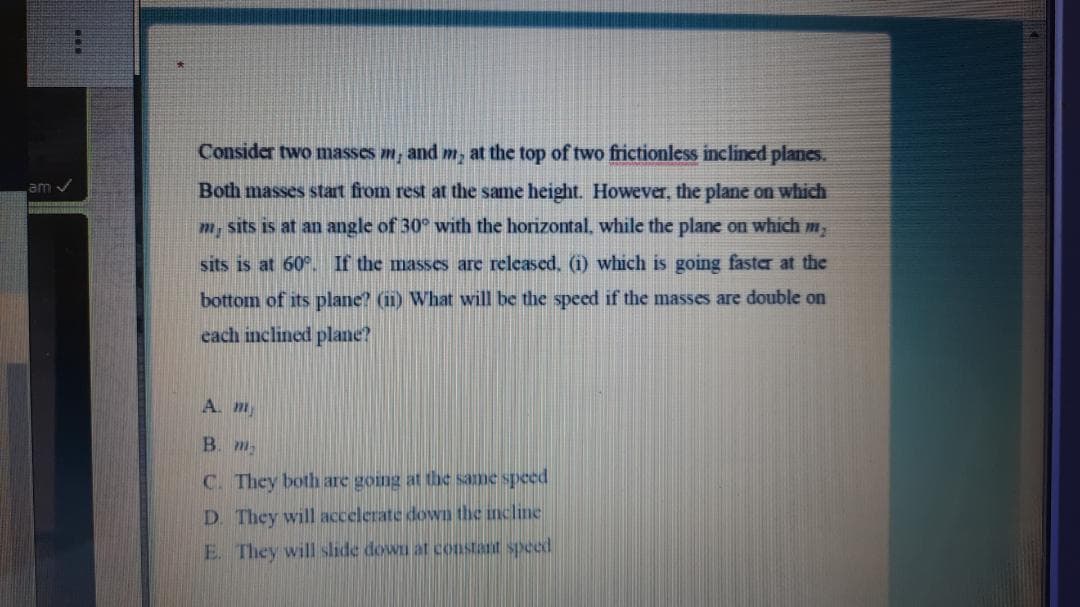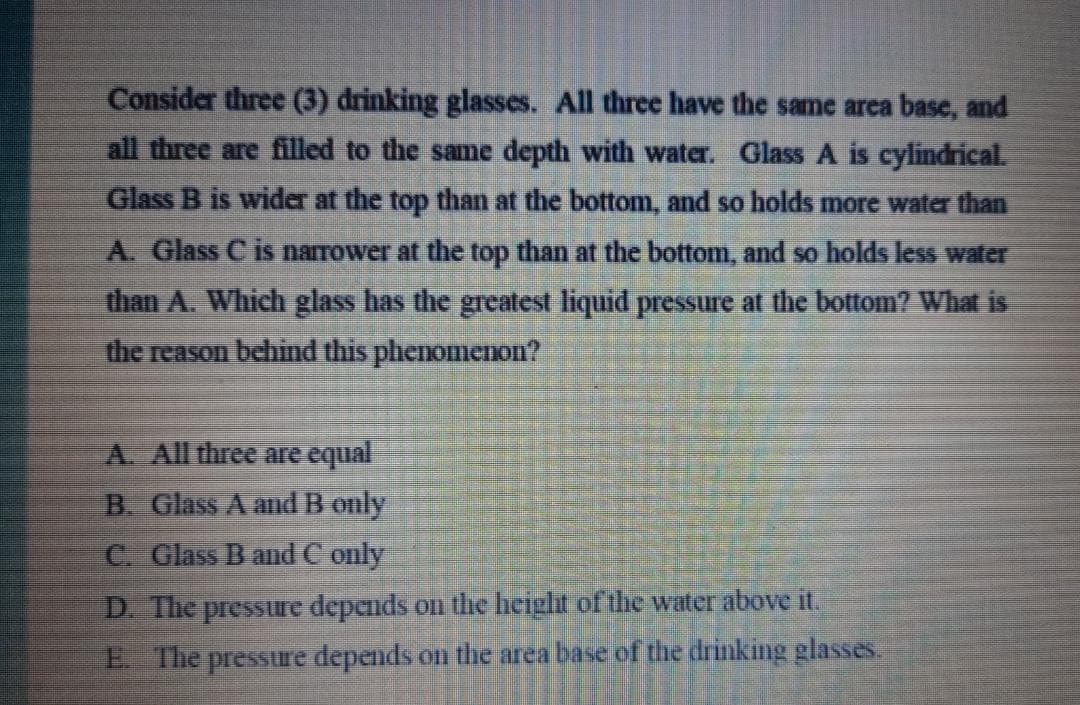Please help me to answer this 3 questions. Please.... Please select TWO options as your correct answers. TWO correct answers will give you correct answer. WRONG answers If you choose ONE answer only or only ONE answer is correct. 1) Consider two masses m 1 , and m 2 , at the top of two frictionless inclined planes. Both masses start from rest at the same height. However, the plane on which m 1 sits is at an angle of 30° with the horizontal, while the plane on which m, sits is at 60 degrees . If the masses are released, (i) which is going faster at the bottom of its plane? (ii) What will be the speed if the masses are double on each inclined plane? a) m1 b) m2 c) They both are going at the same speed d) They will accelerate down the incline e) They will will slide down at constant speed 2) Consider three (3) drinking glasses. All three have the same area base, and all three are filled to the same depth with water. Glass A is cylindrical. Glass B is wider at the top than at the bottom, and so holds more water than A. Glass C is narrower at the top than at the bottom, and so holds less water than A. Which glass has the greatest liquid pressure at the bottom? What is the reason behind this phenomenon? A. All three are equal B. Glass A and B only C. Glass B and C only D. The pressure depends on the height of the water above it. E. The pressure depends on the area base of the drinking glasses, 3) Two objects, with masses m 1 and m 2 ;, are originally a distance r apart. The gravitational force between them has a magnitude F. The second object has its mass changed to 2m, and the distance is changed to r / 4 . (1) What is the magnitude of the new gravitational force? (ii) What is the new speed? A) F B) 16 F C) 32 F D) 4.0ms^-1 E) 16.0 ms^-1
Please help me to answer this 3 questions. Please....
Please select TWO options as your correct answers. TWO correct answers will give you correct answer.
WRONG answers If you choose ONE answer only or only ONE answer is correct.
1) Consider two masses m 1 , and m 2 , at the top of two frictionless inclined planes. Both masses start from rest at the same height. However, the plane on which m 1 sits is at an angle of 30° with the horizontal, while the plane on which m, sits is at 60 degrees . If the masses are released, (i) which is going faster at the bottom of its plane? (ii) What will be the speed if the masses are double on each inclined plane?
a) m1
b) m2
c) They both are going at the same speed
d) They will accelerate down the incline
e) They will will slide down at constant speed
2) Consider three (3) drinking glasses. All three have the same area base, and all three are filled to the same depth with water. Glass A is cylindrical. Glass B is wider at the top than at the bottom, and so holds more water than A. Glass C is narrower at the top than at the bottom, and so holds less water than A. Which glass has the greatest liquid pressure at the bottom? What is
the reason behind this phenomenon?
A. All three are equal
B. Glass A and B only
C. Glass B and C only
D. The pressure depends on the height of the water above it.
E. The pressure depends on the area base of the drinking glasses,
3) Two objects, with masses m 1 and m 2 ;, are originally a distance r apart. The gravitational force between them has a magnitude F. The second object has its mass changed to 2m, and the distance is changed to r / 4 . (1) What is the magnitude of the new gravitational force? (ii) What is the new speed?
A) F
B) 16 F
C) 32 F
D) 4.0ms^-1
E) 16.0 ms^-1


Trending now
This is a popular solution!
Step by step
Solved in 3 steps






